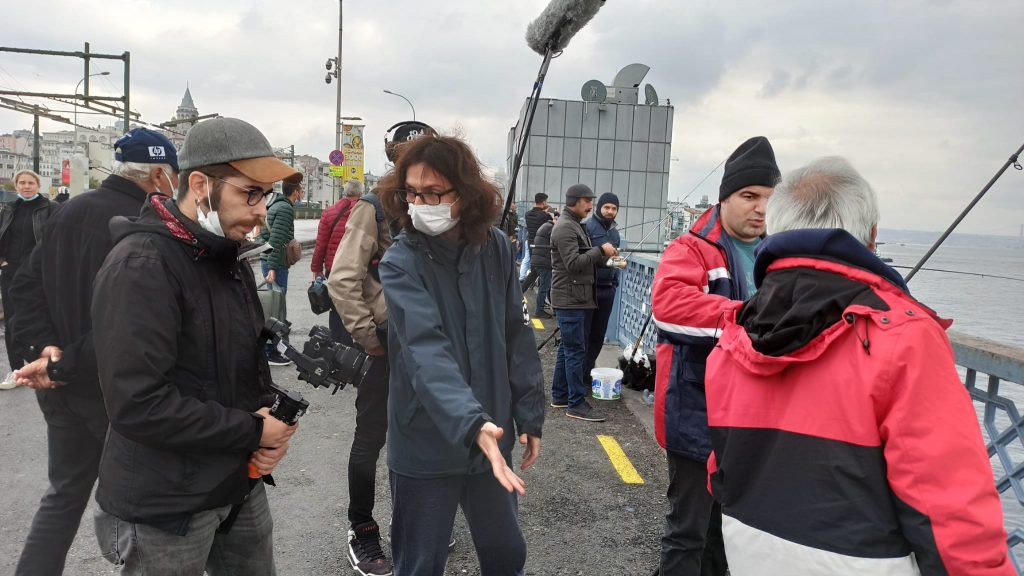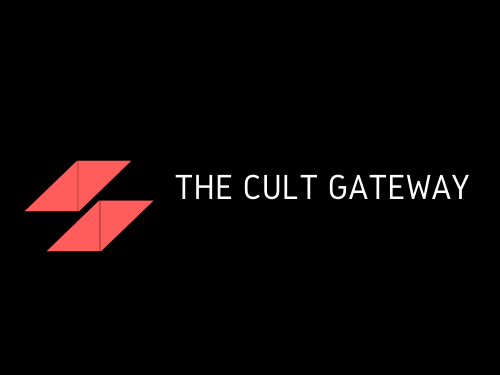Serkan Aktaş is an award-winning filmmaker and one of the most influential voices in Turkish cinema, known for his distinctive approach to storytelling and his exploration of philosophical themes. With a passion for fantasy and science fiction, Aktaş’s films combine intellectual depth and raw emotion. His filmography includes notable works such as The Librarian (2022), Mirrorty (2017), and Resurrection Under the Ocean (2021), all of which have earned numerous accolades at international film festivals.
Aktaş holds degrees in Business Administration from Anadolu University and Mathematics from Dokuz Eylül University, and further honed his craft at the Istanbul Cinema Academy. He also earned both a Master’s and a Doctorate in Film and Television from Beykent University. His films are characterized by their intricate narratives and philosophical undertones, often reflecting his interests in abstract mathematics, quantum mechanics, metaphysics, and Sufism.
In addition to filmmaking, Aktaş is also an author, having published books based on his films, including The Librarian(2023) and Mirrorty (2023). His work continues to push boundaries, blending traditional storytelling with the potential of modern technology. He is particularly passionate about making cinema more accessible to emerging filmmakers, especially through the integration of AI and other emerging technologies.
In this interview, we dive into Serkan Aktaş’s unique approach to filmmaking, exploring his creative process, his perspective on Turkish cinema, and his thoughts on the future of storytelling in an evolving industry. Read on to learn more about the man behind these award-winning films.

You tackle deep and sometimes philosophical themes. Where do your inspirations for these subjects come from, and how do you translate them visually on screen?
My inspirations come from a combination of intellectual exploration and a deep curiosity about the human condition. From the beginning of my filmmaking journey, I’ve always sought to answer questions that I find deeply philosophical—questions about identity, existence, and how we relate to the world around us. These ideas often emerge from my academic background in mathematics, physics, and philosophy, as well as my personal reflections on the world.
For example, in The Librarian, I wanted to explore the idea of language and identity in the face of societal change. I was inspired by the isolation and alienation that so many people feel in the modern world, especially in the context of Turkey’s sociopolitical changes. I used the sea as a powerful metaphor to represent the protagonist’s internal struggle and his search for freedom. Visually, I aimed to make the sea feel vast and overwhelming, yet hopeful, symbolizing both the protagonist’s emotional depth and his yearning for a sense of peace amidst the chaos.
In Resurrection Under the Ocean, the theme of psychological rebirth came to life through the metaphor of resurrection. I translated this through the visual imagery of the ocean—a place that can drown you, but also be the source of your rebirth. The imagery of the ocean isn’t just about physical space but represents emotional and psychological depth. I wanted the audience to feel the weight of the character’s inner struggle and his eventual rise from the depths, not just physically but also emotionally.
Mirrorty was deeply inspired by psychoanalytic theories, particularly Lacan’s concept of the “mirror stage.” I wanted to explore how technology, especially through mirrors like smartphones and computers, reflects our sense of self. The protagonist’s journey is a reflection of how modern technology alienates us from reality. I used the black mirrors of our digital devices to symbolize this alienation, translating it visually by creating a stark, almost oppressive environment, where the lines between reality and the virtual world blur.
For me, the visual metaphors in each of these films are not just embellishments but core to how the themes are communicated. Each symbol—whether it’s the sea, the ocean, or the black mirrors—serves as a visual anchor that helps the audience connect with the deeper psychological and philosophical questions being explored. The challenge is finding the right visual representation for each concept, and ensuring that it’s woven seamlessly into the story. I aim to create films that not only entertain but also provoke thought, pushing the audience to examine their own place in the world and the deeper truths that lie beneath the surface.
As both a director and screenwriter, what is your creative process like? Do you work on the script first before thinking about the visuals, or does the visual concept influence the story from the very beginning?
For me, the story always comes first. Dramatic structure is essential, and it’s the foundation upon which everything else is built. I always say, “Read every day, watch every day, write every day, and then make your movie.” This quote encapsulates my approach: the more you immerse yourself in different stories, ideas, and experiences, the more you can refine your own. Every day is a learning process, and the more input I get, the more output I can produce. This constant practice shapes the way I write and think about film.
When I begin a project, I’m focused on finding the right story—the heart of it. I start by working on the story, searching for the essence of the narrative. I spend a lot of time here because a solid, powerful story is the key to building a compelling and meaningful script. Once I’ve found the best story, I begin to develop the script itself. This is where the devil truly hides in the details. I can’t afford to miss any element of the story, and I make sure to consider every option, every parameter, and every alternative way the narrative could unfold. The more thorough and precise the structure, the stronger the script will be.
Only once the script is solid do I begin thinking about the visuals. Of course, the visuals are crucial in telling the story, but they are always secondary to the narrative. The visuals must serve the story and deepen the emotional resonance of what’s happening. They come into play when I’m ready to bring the written word to life. I want the visual concept to enhance the themes and emotional beats of the script, but the story always holds the central place in my process.
This detailed and thoughtful approach allows me to develop a comprehensive vision of the film, one where every element—whether it’s the dialogue, the character arcs, or the cinematography—works in harmony. My goal is always to make sure the script is as tight as possible before I move forward with the visual development. Once I have that foundation, everything else falls into place more naturally.
The film industry has changed dramatically in recent years, especially with the rise of streaming platforms and technologies like virtual reality. How have these changes impacted your work, and how do you see the future of cinema in this new context?
The film industry is indeed undergoing a dramatic transformation, and the rise of streaming platforms and emerging technologies like virtual reality (VR) has dramatically reshaped the way we create and consume films. As a filmmaker, I’ve witnessed the power of streaming platforms in making films more accessible to global audiences. Films that once might have been limited to a specific geographic region or niche audience now have the opportunity to reach millions of viewers across the world. This democratization of film distribution is exciting because it allows for more diverse voices and stories to be heard.
At the same time, virtual reality and other advanced technologies are pushing the boundaries of storytelling itself. VR offers a new kind of immersive experience that traditional filmmaking can’t replicate. It challenges us to rethink how we connect with an audience, offering a more interactive and participatory form of cinema. While I’m still exploring how these technologies could fit into my work, I see their potential for creating entirely new ways of storytelling—something that excites me for the future.
However, it’s the technological advancements in filmmaking tools, particularly AI, that I find most thrilling. As an independent filmmaker, one of the biggest challenges has always been financial constraints and the high production costs associated with making a feature film. But I believe that in the future, AI and other emerging technologies will lower these barriers, making high-quality filmmaking more accessible to everyone. Writing stories and scripts will always remain crucial, and with AI and new tools, filmmakers will be able to create stunning visuals, enhance storytelling, and even streamline the post-production process—all with lower budgets. This could open the door for an entirely new generation of storytellers to bring their creative visions to life.
Looking ahead, the future of cinema seems to be leaning toward greater interactivity and personalization. With the growing role of AI, we might see films that adapt to individual viewers’ preferences, creating more tailored experiences. But regardless of the technology or platform, I firmly believe the essence of cinema lies in crafting original stories and scripts that resonate with the audience. The tools may evolve, but the heart of cinema is in the emotional connection between the storyteller and the audience. That’s why we must carry on: “Read every day, watch every day, write every day and then make our movies.”
With the growing internationalization of cinema, how do you see Turkish cinema evolving on the global stage? What do you believe are the distinctive strengths of Turkish cinema today?
Turkish narrative tradition has a rich history rooted in the nation’s deep narrative culture, which has long been shaped by stories, tales, legends, and oral traditions. Filmmakers like Ertem Eğilmez and Yavuz Turgul have drawn from this well of storytelling to create timeless works that paved the way for us. These filmmakers understood the importance of dramatic structure and creating stories that resonate deeply with the audience. Films like Hababam Sınıfı, Süt Kardeşler, Şaban Oğlu Şaban, Eşkiya, and Muhsin Bey have stood the test of time. The strength of these films lies in their ability to be watched over and over again. The best movie is one that can be watched over and over again, and this is the kind of filmmaking we need to continue in Turkey.
For Turkish cinema to keep evolving and reach greater international recognition, it’s essential that we, as filmmakers, focus on creating meaningful stories. Our stories, rooted in the heart of Turkish culture, have universal themes of love, loss, and identity that connect with audiences worldwide. What will help Turkish cinema thrive globally is our ability to craft narratives that leave a lasting impact. It’s about creating films that stay with the audience, encouraging them to return and engage with the story time and time again.
To the aspiring filmmakers in Turkey, I always say: “Read every day, watch every day, write every day, and then make your movie.” This is the key to growth. The more input you have, the more output you can create. There is no such thing as a bad writer—there are only lazy writers. The real work comes in consistently honing your craft, expanding your knowledge, and putting in the effort. If you embrace this mindset, Turkish cinema will continue to grow and evolve, reaching new heights both locally and globally.
So, let’s build on the strong foundation of filmmakers before us and continue to tell stories that matter—stories that can stand the test of time. By respecting the essence of our cinema while also embracing the future, we can make Turkish films unforgettable on the global stage.
Follow him:
IMDB |
LinkedIn |
TMDB |
X |
Vimeo |

